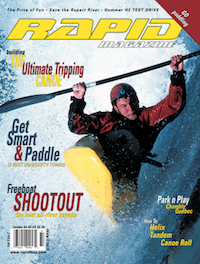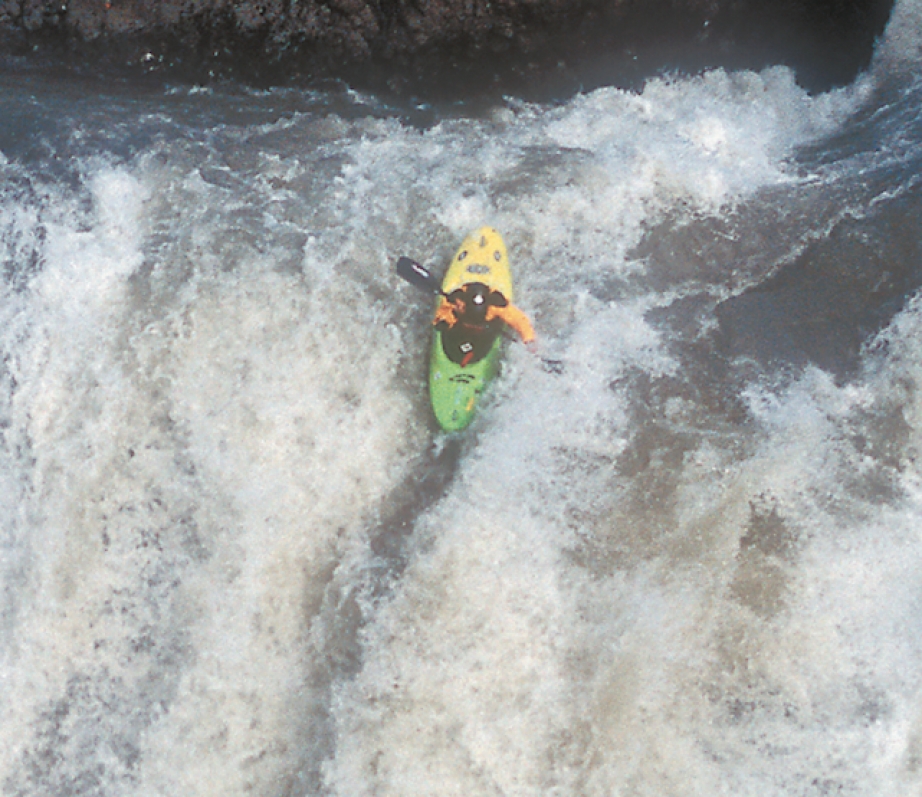“Fearfulness is one of the most basic physiological and behavioral responses we have,” says University of Wisconsin psychology professor Ned Kalin. Although we all have different fear thresholds, fear is a natural, evolved response to danger. Face it. We were born to be afraid of whitewater.
Good paddlers, however, have long distinguished between good fear and bad fear. Good fear tells you when you’re in over your head. Bad fear—debilitating, self-doubting fear— is the irrational funk that psyches you out before a drop when your paddling skills, experience and fitness are otherwise up to the challenge.
Psychologists say that these fear responses are ingrained through experience. Any negative or traumatic experiences that we have in whitewater are etched into the brain’s biochemical hard-drive to replay next time we face a similar situation.
Does this mean that we are all confined to a fixed level of mental comfort in paddling? Absolutely not! Through physical preparation and visualization, we can “reprogram” our fear response to match our paddling abilities and aspirations.
TAKE IT EASY
Physical reprogramming is the first step. Consistent time on the water is one of the best fear antidotes. Drop down to a grade of whitewater that’s comfortable for you or go back to flatwater to hone your technique and fitness. Take a course, invest in an instructional book or video, or go out with a friend who is technically better than you. Work on your bal- ance and your roll…on both sides. Create “class V moves” on class I and II. Creek boater Ed Poropat advises, “Above all, don’t be satisfied with ‘I got down OK.’ Strive for grace and excellence when practicing on the easy stuff. Soon, these difficult lines will seem easier, your confidence will soar, and you will know you can hit similar lines on tougher rivers when it really counts.”
GO TO YOUR HAPPY PLACE
The next stage of your transformation is mental reprogramming through visualization, a technique used by top athletes in all sports. Quebec open boater and creeker Gigi Rioux and big-drop performer Tao Berman both routinely use visualization. Visualization can actually change nerve pathways in your brain, altering your brain’s biochemical programming to produce new fear responses.
One of the best visualization techniques, developed for alpine skiers by Dr. Richard Suinn, is called Visual Motor Behavior Rehearsal (VMBR). Suinn says, “The VMBR technique combines relaxation and imagery in a format that allows individuals to desensitize themselves to a stressful situation.”
To conduct VMBR, find a quiet place and breathe deeply, in through your nose and out through your mouth. Calm and quiet your mind and body. Go to a scene in your mind that represents calm, and focus on that scene in full detail. Spend some time switching back and forth between an empty mind and the calming scene.
Next, imagine yourself getting ready to paddle the river, drop or hole that would normally inspire fear. Visualize every detail, from what you are wearing, to the temperature of the water, to every stroke you place. Visualize in real time or even slow motion—don’t skip a step. Keep breathing deeply. If fearful or self-doubting thoughts creep in, switch back to your calming scene and then start over. Intense fear may call for several visual- izations a day; mild fear may only require a visualization before you paddle.
AND WHEN I SNAP MY FINGERS…
Finally, introduce a verbal or physical cue to match the visualization of success. For example, choose a word that inspires strength and confidence and recite it several times after each visualization. Or hold your hands in a certain position while you are visualizing. I used to create a circle with my thumb and forefinger—a gesture easy to do while holding a paddle. As you visualize more using these cues, your brain will associate your word or hand position with images of confidence and success.
When it’s time to paddle the river or rapid that used to inspire fear, try your focused breathing and your verbal or physical cue. As you are scouting or contemplating the run, repeat your visualization. You will likely experience some of the physical aspects of a fear response, and you should—you want your body to be alert and responsive in a challenging situation—but you will also feel confident and focused.
If you’re still gripped, don’t be discouraged. You may need to take more time for physical and mental preparation. Eventually, you’ll get where you want to be, or you may decide that you can have a great paddling career without ever running that drop or going into that hole. Move on and have a good day on the water. In the big picture, being healthy and on the river with your friends is pretty much as good as it gets!
Dianna Townsend, a boater of 10 years, paddles in the Southern Sierra Nevada, visualizing and breathing deeply on every drop.





